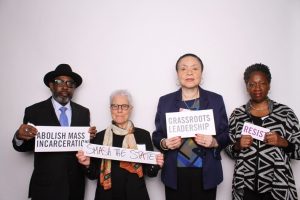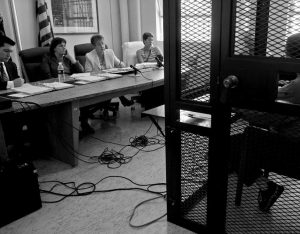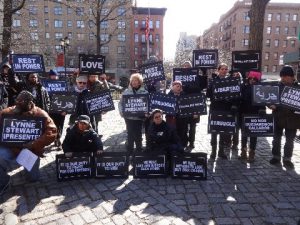Podcast: Play in new window | Download
Aging Prisoners and the Law Of Parole
The United States of America imprisons a higher proportion of its population than any other country in the world. Today America holds 2.3 million people behind bars. This has been called “mass incarceration.” Part of the reason for mass incarceration is the system of parole, which many consider to be broken, especially in New York State. The purpose of incarceration is punishment. It is also rehabilitation. And third, it is an opportunity for a person to come to terms with what she did, and gain skills. This is why prisons are called “correctional facilities.” When a person has repaid society for her crime, has been rehabilitated, and does not pose a threat to the community they are supposed to be paroled. But it actuality, this is not the way it works. In many cases, especially when the applicant for parole had committed a violent crime the sole criteria that the parole board examines is the nature of the crime that was committed. Something that convict cannot change. The latest example is the denial last month of parole to 67 year-old New York Prisoner Judy Clark who has been behind bars for 35 years for her role and driving the getaway car in the bungled 1961 Brinks armored car robbery which left to Nyack New York police officers and then I’m a truck driver dead. New York Governor Andrew Cuomo, in granting Judy Clark clemency so she would be eligible for parole, said “It was a hard political decision.”
I could hear Jimmy Breslin’s voice saying “she made a mistake – we all do. She learned, she paid the price, she spent her life in a cage, and she is now different. Jesus would pardon her. Who the hell made you better than Jesus? ” A prominent local police chief Joseph Sinagara commented that “I don’t care what kind of model prisoner she was.” Ms. Clark’s daughter, Harriet, said she understood the seriousness of the crime but believed the decision by the board was an injustice. “My mother did not kill anyone, and it’s hard for me to understand who is served by making her die in prison, which is what decisions like this eventually amount to.”
Guest – Professor Steven Zeidman is the Director of the Criminal Defense Clinic at CUNY School of Law. A graduate of Duke University School of Law, he is a former staff attorney and supervisor at the Legal Aid Society. Professor Zeidman is a member of American Bar Association’s Criminal Justice Section Council, and serves on the Board of Directors of Prisoners’ Legal Services and an Advisory Council created to help implement the remedial order in the Floyd v. City of New York stop-and-frisk litigation. He has served on several statewide commissions, including the Commission on the Future of Indigent Defense Services.
Guest – Laura Whitehorn , a former political prisoner who served 14 years for the distruction of government property in connection with a 1983 bombing at the US Capitol where no one was injured. She was released in 1999. Laura Whitehorn is a leader in the Release Aging People in Prison Organization and has been active in challenging the New York state parole board’s intransigence.
—-
Lynne Stewart’s Memorial
Many attended Lynne Stewart’s memorial including Glen Ford, Hon. Charles Barron, Jeff Mackler, Pam Africa, Father Lawrence Lucas, Ralph Schoenman, Jess Sundin, Rev. Allison, Lamis Deek, Sara Flounders, Bob Lederer, Janine Otis Ensemble, Nat Turner – Poet, Atiba Wilson – Drummer, Dr. Patrice Turner and many more. We hear an impassioned speech by Chris Hedges.
Lynne Stewart: A Revolutionary Life Well-Lived – A Biographical Glimpse
————————————————————————————-



